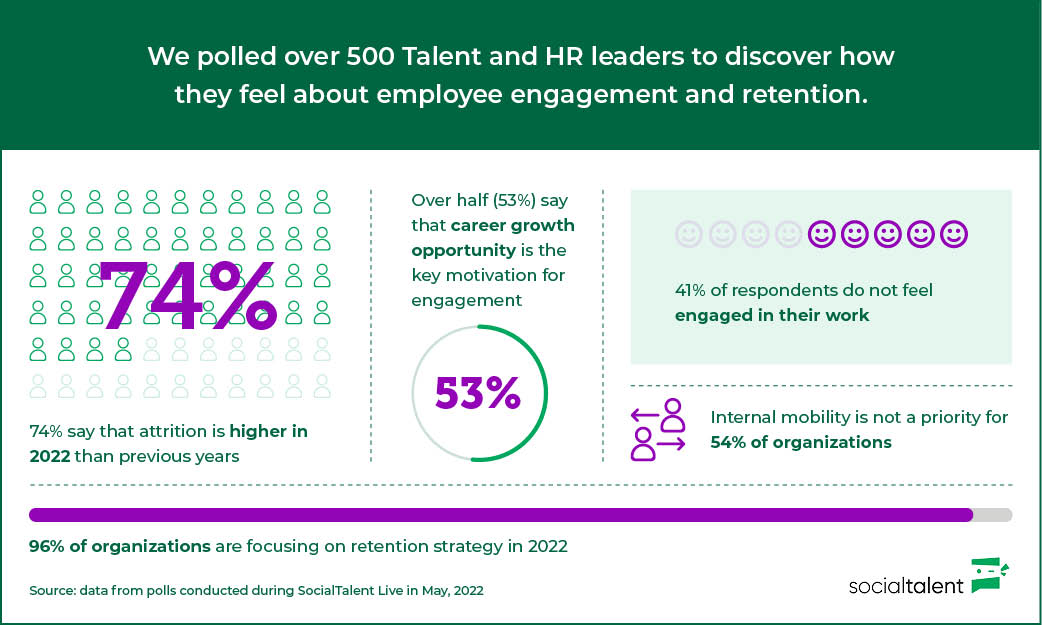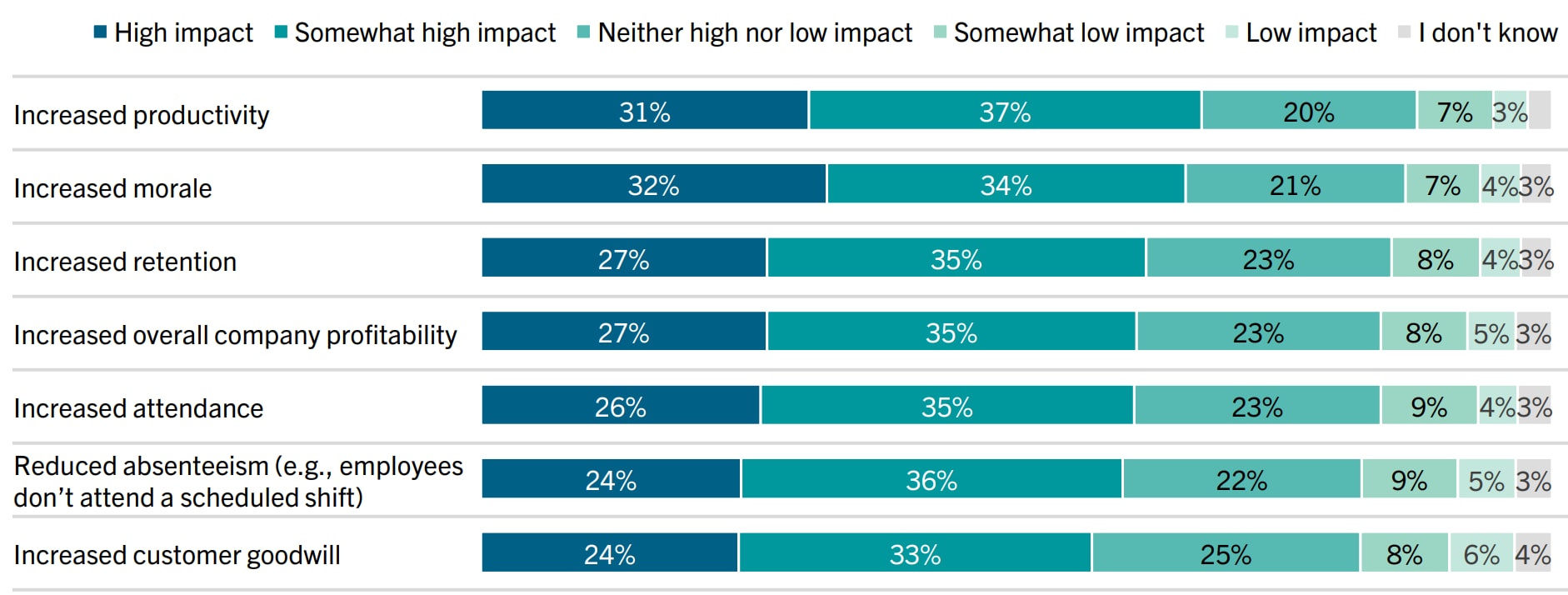Why Employers Should Promote from Within

Nothing is worse than feeling like you’re stuck in a dead-end job. Eventually you start to see the warning signs add up. Your ideas are consistently ignored. You don’t feel valued. There’s no clear career pathway to advance, learn or grow.
Sadly, millions of workers feel this way every year, leading them to burn out and quit their jobs.
Pew Research found that 63 percent of employees who left their jobs in 2021 cited “lack of career advancement” as a primary reason. Employees who don’t see a clear progression from their current role to a better position ultimately turn to opportunities outside of their organization.
Employee retention correlates to upward mobility
Studies have shown that employers who don’t offer advancement opportunities for workers find difficulty in both hiring and retaining talent—not to mention in maintaining a happy staff and positive work culture. In a recent SocialTalent survey, the majority of HR leaders indicated “career growth opportunity” as the key motivation for employee engagement and retention.

Advancement opportunities are especially important to hourly and low-wage workers. According to study by WorkStep, frontline workers highly prioritize their career growth. However, upward mobility is becoming harder to achieve as the US economy faces decades of rising inequality, stagnating wages and a shrinking middle class. As a result, this essential segment of the workforce tends to see more burnout and higher turnover.
In response, many organizations have made retention a core strategy, particularly since the start of the Great Resignation. Most business leaders recognize the strong correlation between the upward mobility of workers and their organization’s business goals (see graph below). It makes both financial and operational sense to retain employees rather than replace them, and employees with higher seniority tend to be more experienced and productive.
Employers rate perceived impact of upward mobility practices on the company’s competitiveness

Source: “Upward Mobility Survey of Employers of Low-Wage Workers in the U.S.,” September–November 2020, Project on Managing the Future of Work, Harvard Business School.
But while most business leaders understand the importance of promoting from within, many fall short of their set goals. Those who do succeed tend to prioritize employee advancement by implementing meaningful programs, educational opportunities, clear career pathways and specific internal goals (for example, 60% of managers will be promoted from within).
Ways to prioritize employee advancement
Employers need to be able to show their workers the long game right from the beginning. This means mapping out what careers could look like for new employees and then providing the framework to keep them learning, growing and advancing.
Below are several best practices that top organizations follow to help their workers navigate internal career pathways:
1. Clearly document career advancement pathways
Develop clear information about pathways to advancement within the organization. Human resources can look for measures and controls for career advancement and then develop documentation with standards that are fair and transparent. Criteria used to assess employee promotion to the next level should be easily accessible to staff at all levels.
2. Prioritize and communicate internal advancement
Prioritize promotion from within by clearly communicating the availability of advancement pathways and new job opportunities. Supervisors can also reach out directly to workers who may be targeted for promotion or be a good fit for a specific position. Overall, employees should be well-informed and fully aware of the advancement options open to them.
3. Provide training and education benefits programs
Educational program curricula should make clear the connection between training and the company’s internal career advancement pathways. Workers should know what to expect after completing the training (for example, how the training is linked to a raise or a promotion). This not only helps the employee; employers can significantly lower costs of recruiting and gain positive long-term outcomes by upskilling their workforce.
4. Employ staff whose specific function is to support career advancement
Supportive supervisors play an important role in encouraging advancement within an organization. However, many companies have found that employing additional staff dedicated to helping workers achieve their career goals can be far more beneficial. A point person, such as a career navigator or mentor, can focus solely on assisting workers to determine what training is most appropriate for their career goals. They can also help to find funding (whether employer contribution, loans or grants) to pay for that training.
The American Dream is tied to the idea of upward mobility, no matter where you started in life. Millions of workers are still seeking this dream, even as it becomes harder for many to achieve. As a result, organizations that prioritize employee advancement will continue to see higher retention and more productivity.
At Accelerated Pathways, we help organizations identify and launch innovative career pathing and educational programs to advance their employees and prepare for the future of work. Ready to offer your workforce more opportunities to learn and grow? Learn about our programs.
